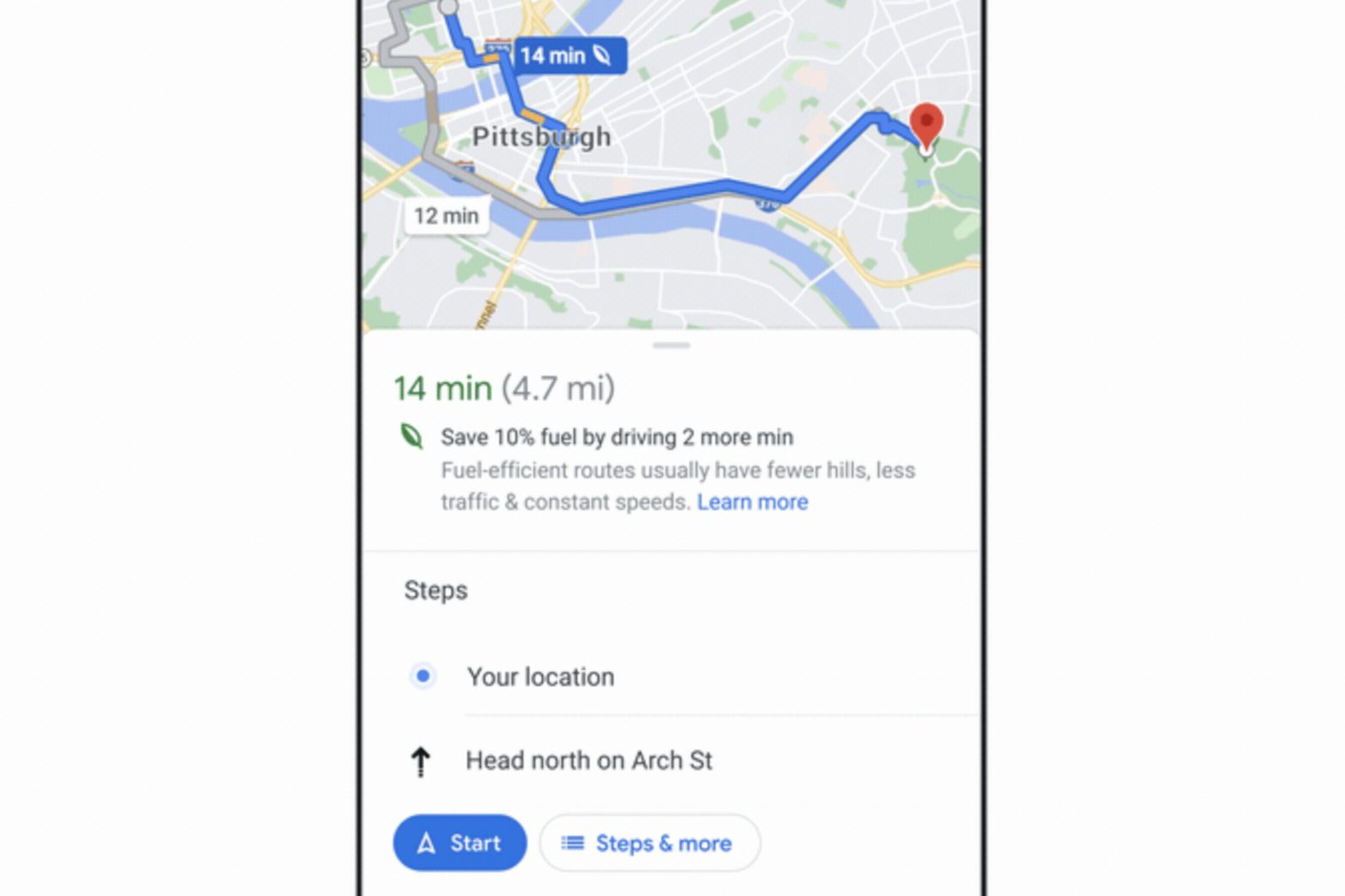/
The company estimates the environmental impact of its eco-friendly routing in a new report.
Share this story
:format(webp)/cdn.vox-cdn.com/uploads/chorus_asset/file/24806281/Screenshot_2023_07_24_at_1.06.34_PM.png)
Drivers are taking Google Maps’ advice for how to reduce greenhouse gas emissions from their trips, according to the company.
In late 2021, Google debuted a feature in Google Maps that allows users to see the most fuel-efficient routes. The feature has since helped prevent around 1.2 million metric tons of planet-heating carbon dioxide emissions, Google estimates in its latest environmental report released today. That’s almost like taking 250,000 gas-guzzling cars off the road for a year, the company says.
The tool launched in the US, but now it’s also available in Canada, Egypt, and nearly 40 more countries in Europe. Google uses a machine learning model to predict which route is the most fuel- or energy-efficient and recommends it to Maps users. If the most fuel-efficient route is also the fastest, Google Maps will default to that option.
A user can also tell the app what kind of engine the car has — whether it’s gas, diesel, hybrid, or electric — to get more accurate predictions. To be sure, taking public transit, biking, or walking are still more sustainable alternatives, and Google says it’s working to make Maps easier to use outside of driving. In November, Google made Maps more immersive with a “Live View” AR feature available in some big cities. It also updated Maps at the time with a filter to help EV drivers find fast chargers.
According to Google’s own analysis, many drivers are taking the path of least pollution in their cars. To calculate the tailpipe emissions that prevented, the company compared how much fuel Maps users likely consumed on the routes they drove to how much fuel they would have burned through had they taken the fastest route without its eco-friendly routing tool. The savings amounted to 1.2 million metric tons of avoided CO2 emissions between October 2021, when Google launched the tool, and December 2022.
It’s all part of Google’s goal of helping a billion users “make more sustainable choices” through its products by 2022. In its new environmental report, Google also shared numbers for energy savings through Nest over the years. It estimates that its smart thermostats saved more than 113 billion kWh of energy and 36 million metric tons of CO2 emissions between 2011 and 2022. Last year alone, Nest thermostats helped users conserve more energy than Google itself used that year.
Google produces exponentially more pollution than any household, of course. Its carbon footprint added up to more than 10.18 million metric tons of CO2 emitted in 2022, roughly equivalent to pollution from more than 25 gas-fired power plants in a year. Google’s emissions have fallen from about 13.6 million metric tons in 2018, but the company still has a long way to go to reach its goal of slashing its emissions in half by 2030.
